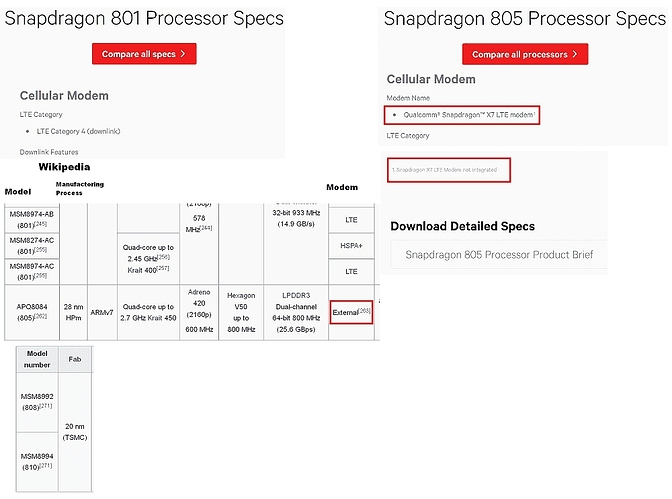Yep, I have to agree.
Relating to a core upgrade I thought about looking out for a pin compatible snapdragon 801 successor. This would give FP the option to only change the layout as little as necessary for few modifications to e.g. more ram. But according to Wiki and Snapdragons HP/Datasheets we have the latest version number and the letter revisions (AA/AB/AC) don’t differ too much.
More central for FP having obstacles to move on without re-engineering the entire SoC board is the fact that the next successor 805 has its modem not integrated.
Snapdragon 808 and up are manufactured in a different process (<28nm) which most sure will change the pin layout again.
So there are limited chances to upgrade to a newer SoC here on a low cost basis.
But staying with SD 801 there are more features yet unused. It can do a lot more like Quick charge, NFC, Display up to 2k, Display output up to 4k, USB3.0, camera up to 21MP, more ram, Bluetooth 4.1 (we have 4.0), btw. stronger Gorilla glass (5).
I think make more out of what we have is a good way to go. But of course utilizing all featured options would also require a massive redesign of the core module.
I believe FP is not out for going this path as others do. It wants to startup in a positive light, which is the harder way but up to now…there is a functional product to be sold, many awards won and more positive than negative overall feedback. Also if it comes to user freedom.
But here are also (former) apple users who got themselve a FP2. Who knows, maybe despite of all this shiny glare and glamour they were fed up with their company policies after all. ![]()
In which direction? To the positive or negative - everyone has its own thoughts when reading names of big players like Apple, Samsung, Monsanto, Nestlè, Coca Cola, VW, Facebook, Amazon, (Elon Musk)…
Actually the movement makes the difference.
